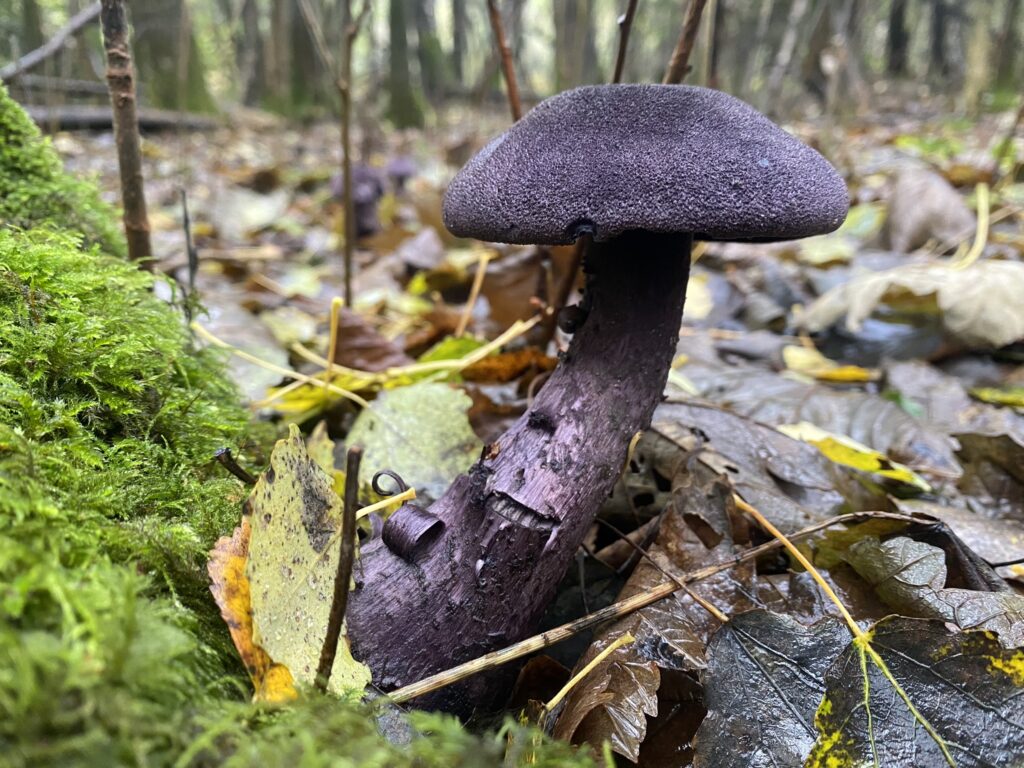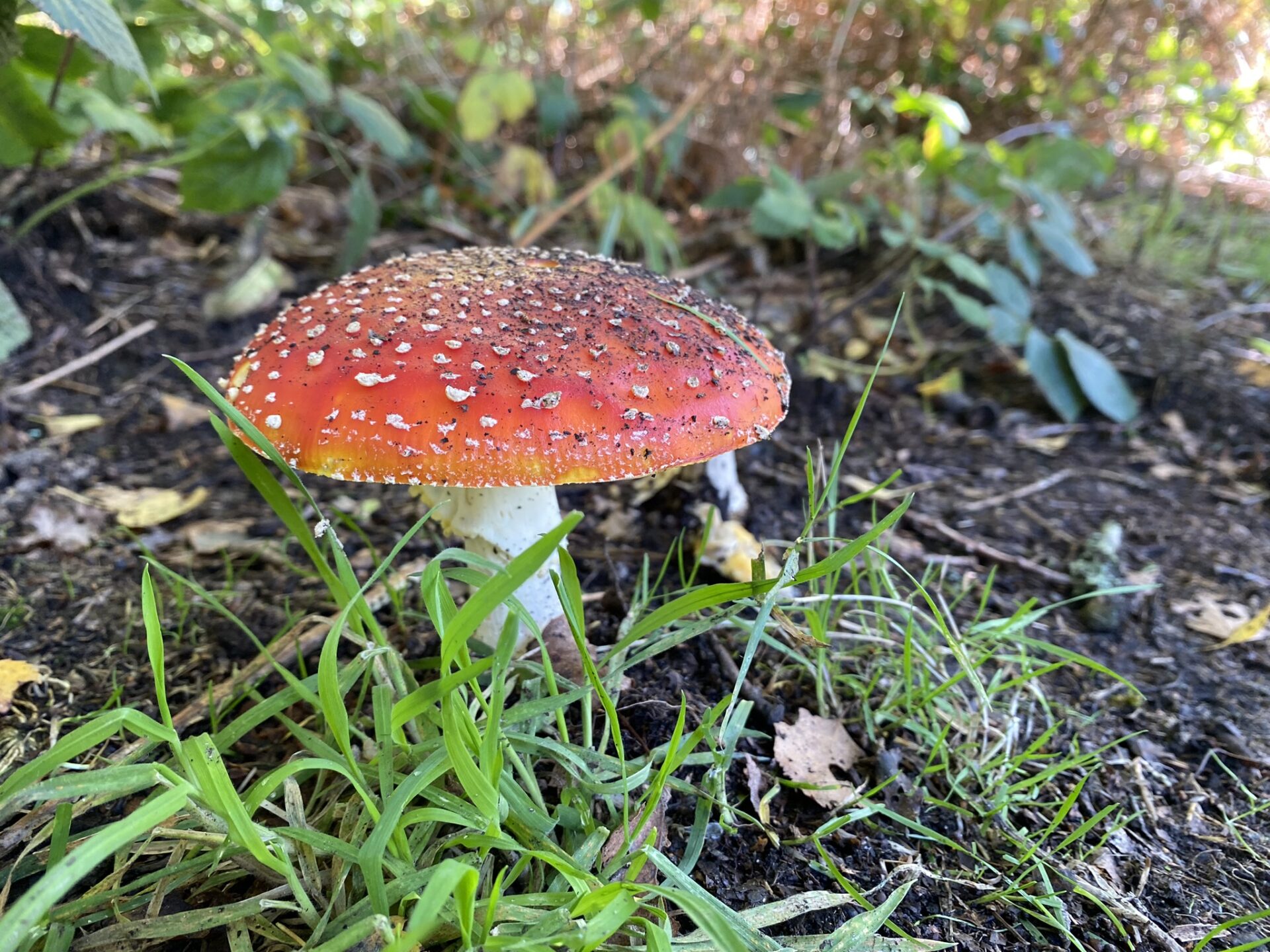Fantastic fungi
October 2023
It’s that time again. Not just mists and mellow fruitfulness but fungi of all shapes and sizes are nearly everywhere you look in the countryside at the moment. Contrary to most people’s perception, fungi are all around us throughout the year, not just the microscopic ones on which most other organisms depend, but also some large and attractive fruiting bodies can be found if you know where to look. For example, bracket fungi grow on trees all year, much sought after morels are spring specialists as are St George’s mushrooms, our familiar “autumn” fungi start to appear in June, and pretty (and colourful) little elf cups persist throughout the winter.

The Banstead Commons are particularly attractive to fungi because the land has been subjected to far less human intervention than most places. Chemicals of any kind, whether fertilisers, pesticides or pollution, change the healthy balance of the soil and inhibit the growth of many fungi. A forest with many different species of mushrooms and toadstools means a healthy forest where the ecosystem has been protected for many years.
The same thing goes for grassland but, as with most environments, different species can mean different things. A field full of “horse” mushrooms could indicate over-grazing or excessive nutrients whereas grassland with many of the waxcaps in the photo, and similar species, indicates an environment that has been managed sensitively to encourage wildlife. A forest with little more than Honey fungus and common inkcaps is not a good sign but one with many Fly agarics and their relatives like the False Deathcap is one that has probably been around in a fairly pristine state for centuries. (Even the genuine Deathcap is good news, provided you don’t eat it!)

Trees where the scarce Violet Webcap finds a home are likely to be lucky trees indeed. Most fungi complement trees rather than damage them. In fact, recent research suggests that many (perhaps all) trees need fungal assistance to grow at all.

We often get asked if people are allowed to forage for mushrooms on Banstead Commons.
The short answer is “No”, except in special circumstances, eg if you have “Commoners’ rights” (and there are only a handful of such individuals). Foraging anywhere on land that is not yours requires the permission of the landowners and managers.
There are several reasons for this.
- 1. There is a growing threat to the countryside from people who exploit it for commercial gain.
- 2. Fungi support not only trees and other plants but also a range of creatures such as small mammals and invertebrates such as the colourfully named flat-footed fungus gnat. Taking a mushroom is not just like picking fruit, it is depriving animals of their homes and livelihoods and unbalancing the natural environment.
- 3. In order to access some of the areas where fungi grow, people and their dogs trample the soil and undergrowth, further damaging the ecology.here is a growing threat to the countryside from people who exploit it for commercial gain.
- 4. We carry out scientific surveys on the Commons in order to understand them better and develop the management programmes required to preserve and enhance them for the benefit of all. Taking away anything from the Commons makes it more difficult for us to get that right.
- 5. Everything on the Commons is there for the benefit of all to enjoy, not just the few.
That said, we might occasionally give official permission to our expert advisers to remove one of two examples so that they can be scientifically examined to determine their identity – some fungi can only be confidently separated into species by microscopy or even DNA analysis.
We want everybody to enjoy the Commons in their full glory and to be able to witness every fascinating plant and creature that lives there. Indeed, it is our legal duty to ensure that all users of the Commons have an equal opportunity to enjoy them.

